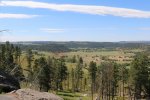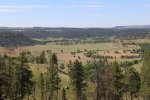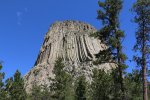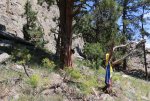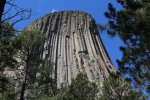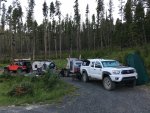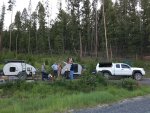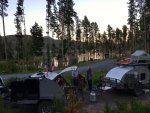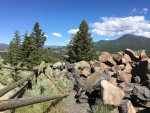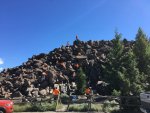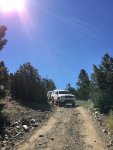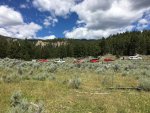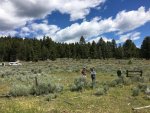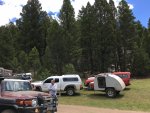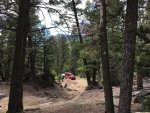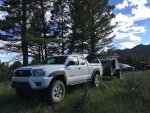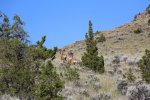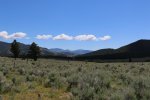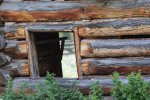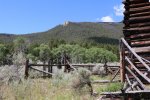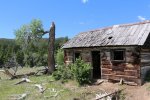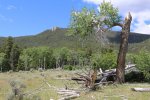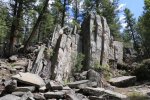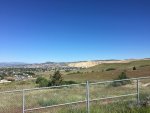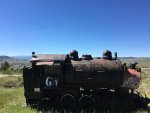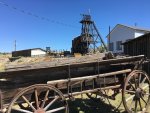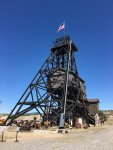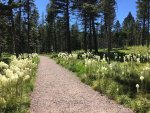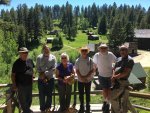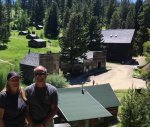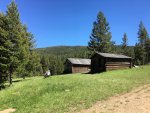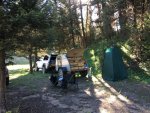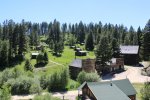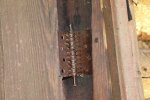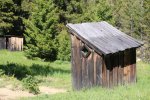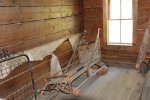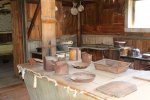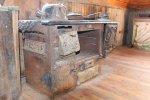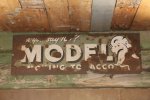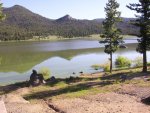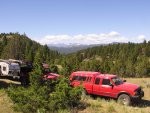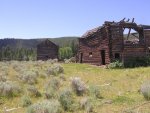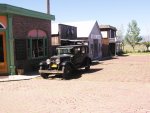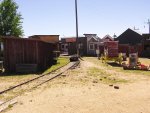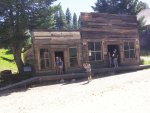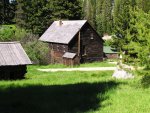Hun
Expedition historian
Day 5 Last Stand and Last Best Land
6/22 Thursday
The sun had us up by 5 am and then disappeared behind clouds to give us a chilly morning. A quick bowl of oatmeal, packed up camp and we were off to Wyoming. We headed north on SR 85, crossed I-90 and picked up SR 24 in Belle Fourche to head west into Wyoming.
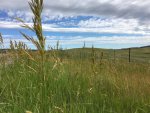
Our first exploration of the day was Devil's Tower in northeast Wyoming.
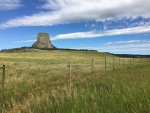
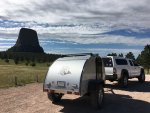
The rock tower, the largest of its kind in the world, and rising up from the plains surrounding it is made up of 5, 6, and 7 sided columns, some 600 feet in length and as much as 10 feet in diameter. We hiked around the tower enjoying the changing terrain from Ponderosa pine forest to overlooks of vast plains dotted with cattle.

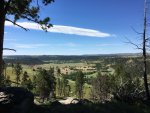
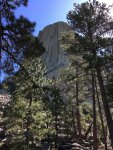
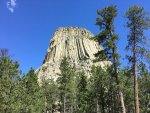
This rock tower is considered sacred ground by native Americans and rock climbing is curtailed the month of June in honor of sacred worship. President Theodore Roosevelt proclaimed this area a national monument in 1906, the first in the country. After our hike we headed back east on SR 24 to Hulett and found a much better-than-expected lunch at Red Rock Cafe. Departing Hulett, a town inhabited by 385 residents, we headed north on 112 to pick up SR 212 in Montana. We drove west into Crow Indian Reservation to the Little Bighorn Battlefield, named a National Monument. This is where Custer's 200+ men were mightily defeated by several thousand 'hostile' Sioux and Cheyenne Indians in 1876. The Indians were deemed hostile by the US government for refusing to give up their nomadic lifestyle and succumb to reservation life. Custer's entire 7th Calvary unit was overrun and died at the hands of the Indians on the hill named Last Stand which was the Native Americans' last great attempt to preserve their way of life. Also on the site is a national cemetery with thousands of cemetery stones dotting the hillside.
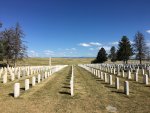
A tribute to the Indians was added recently in 2003 to honor Sitting Bull, a great Lakota leader and the Indians from 5 tribes that gave their lives fighting to protect their lifestyle.
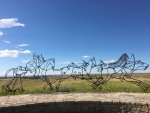
On site with us was a television crew filming an episode for Mysteries of Museums for the Travel Channel. It's sure to be a good episode to take in. From Custer's battlefield, now renamed Little Bighorn Battlefield, we drove north to Hardin to camp for the night. The town was bustling with activities for the annual reenactment of the Little Bighorn Battle. In town we happened upon a barbecue restaurant, Big Horn BBQ Boys, which rivaled any Texas barbecue we've had. At camp, we got in out of the gusty wind and called it a day. (51568, 300 miles)
6/22 Thursday
The sun had us up by 5 am and then disappeared behind clouds to give us a chilly morning. A quick bowl of oatmeal, packed up camp and we were off to Wyoming. We headed north on SR 85, crossed I-90 and picked up SR 24 in Belle Fourche to head west into Wyoming.

Our first exploration of the day was Devil's Tower in northeast Wyoming.


The rock tower, the largest of its kind in the world, and rising up from the plains surrounding it is made up of 5, 6, and 7 sided columns, some 600 feet in length and as much as 10 feet in diameter. We hiked around the tower enjoying the changing terrain from Ponderosa pine forest to overlooks of vast plains dotted with cattle.




This rock tower is considered sacred ground by native Americans and rock climbing is curtailed the month of June in honor of sacred worship. President Theodore Roosevelt proclaimed this area a national monument in 1906, the first in the country. After our hike we headed back east on SR 24 to Hulett and found a much better-than-expected lunch at Red Rock Cafe. Departing Hulett, a town inhabited by 385 residents, we headed north on 112 to pick up SR 212 in Montana. We drove west into Crow Indian Reservation to the Little Bighorn Battlefield, named a National Monument. This is where Custer's 200+ men were mightily defeated by several thousand 'hostile' Sioux and Cheyenne Indians in 1876. The Indians were deemed hostile by the US government for refusing to give up their nomadic lifestyle and succumb to reservation life. Custer's entire 7th Calvary unit was overrun and died at the hands of the Indians on the hill named Last Stand which was the Native Americans' last great attempt to preserve their way of life. Also on the site is a national cemetery with thousands of cemetery stones dotting the hillside.

A tribute to the Indians was added recently in 2003 to honor Sitting Bull, a great Lakota leader and the Indians from 5 tribes that gave their lives fighting to protect their lifestyle.

On site with us was a television crew filming an episode for Mysteries of Museums for the Travel Channel. It's sure to be a good episode to take in. From Custer's battlefield, now renamed Little Bighorn Battlefield, we drove north to Hardin to camp for the night. The town was bustling with activities for the annual reenactment of the Little Bighorn Battle. In town we happened upon a barbecue restaurant, Big Horn BBQ Boys, which rivaled any Texas barbecue we've had. At camp, we got in out of the gusty wind and called it a day. (51568, 300 miles)


